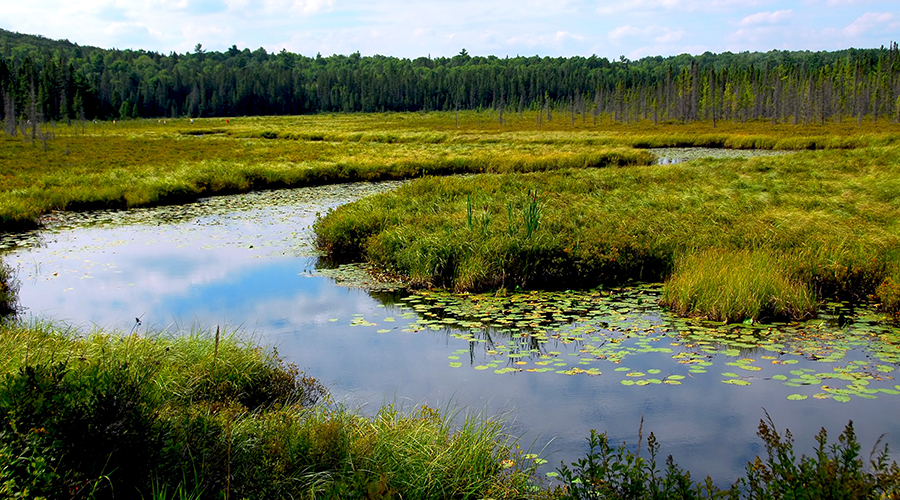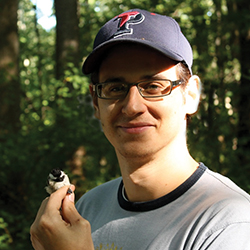
“Wetlands are often referred to as the kidneys of the landscape,” explains Robert George (Master of Environmental Studies '13). “The ecological services they provide are too numerous to list. And unfortunately, the overall acreage of wetlands globally and nationally has been in steep decline over the last few centuries, and that has impacted water quality.” In his current role as a life scientist with the US Environmental Protection Agency (EPA), Robert represents the Enforcement Compliance Assurance Division for Region 3 that includes Pennsylvania, Delaware, Maryland, Virginia, West Virginia, and Washington, DC.; he enforces Section 404 of the Clean Water Act, which prohibits the discharge of fill material into waterways and wetlands. As a federal scientist, he says, you need to understand and communicate policy and scientific data to the general public as well as to regulatory agencies. That’s why Robert pursued Penn’s Master of Environmental Studies (MES) degree: “I wanted my graduate studies to focus on data interpretation, data analysis, and technical writing, which has really benefited me as a professional scientist,” he says.

At Penn, Robert focused primarily on biology and life sciences, taking technical courses in field ecology, wetlands ecology, and bioremediation. “The courses were very hands-on,” he recalls. “We would go out to various habitats in this area and look at soils, vegetation, hydrology, and any wildlife that were utilizing the site. That technical understanding really provided the basis for me as a restoration ecologist.” Robert was able to customize his MES curriculum by defining an Individualized concentration in population biology—a field he further explored during a research fellowship with the US Forest Service in collaboration with University of Delaware. This project looked at the impacts of forest fragmentation on a variety of species including birds and macroinvertebrates such as deer ticks. “The deer tick and lone star tick are common disease vectors in this region, so it was a rather interesting research project that still bears relevance today,” he says. For his capstone research, he collaborated with an entomologist at Stroud Water Research Center on a project that combined his interests in population biology and freshwater ecology: he leveraged DNA sequencing—a technology that had recently become relatively affordable—to look for deviations in the genetic code of various mayfly species. “Mayflies are important in stream assessment, because they can be sensitive to environmental or chemical changes in a watershed,” he explains; the presence, abundance, and diversity of mayfly nymphs can be an indicator of stream health.
Although Robert worked full time in a neuroscience research lab at Penn during his coursework and research, he completed the program in two years. “I was very task-oriented,” he laughs. “I look back on that period and think of it very fondly. I really enjoyed myself and enjoyed my time in University City. I was thankful to have the opportunity to work full time and also be part of the Penn community.” He particularly values the different perspectives of his classmates and peers, whose environmental interests reflected a broad range of professional and academic fields. “One of the things I liked about the program was its flexibility. You really could choose your own adventure,” he recalls. “And I now have colleagues and professional connections from the programs that are in sustainability, that are attorneys, that are in business, that are in municipal government. Developing those bonds really is a good way to round out your professional connections.”
For example, when Robert began exploring career opportunities after graduation, he reached out to alumni to ask questions about their experience with different organizations. “That level of detail at that granular level from a personal experience standpoint is worth its weight in gold. You’re not going to be able to get that level of insight looking online,” he says. As he developed into a project manager for a private habitat restoration firm, he found himself drawing on an interdisciplinary perspective more than he expected. “I always considered myself to be more of a pure biologist, but if you’re going to function in this space—the private sector or working with a state or federal entity—policy drives the bus,” he says. “What really governs natural resource management in the United States is federal policy—specifically the Clean Water Act, in my case. So that meant becoming comfortable with policies and statutes, what they entail, what they apply to, and how they’re actually implemented from a programmatic standpoint on a day-to-day basis.”
As a scientist dedicated to enforcing the federal statutes that protect wetlands and waterways, Robert encourages environmentally-minded residents to know and appreciate what these natural resources contribute to their region. He feels energized by the opportunity to connect with similarly dedicated individuals—such as when he participated in a recent MES alumni panel as a speaker. “It brought a flood of really positive memories,” he reflects. “I was really taken aback—in a positive way—by the enthusiasm of the student base. All the questions that I received were outstanding. It was really encouraging.”
This work is not a product of the United States Government or the US Environmental Protection Agency and does not necessarily represent the views of the United States or US EPA.





